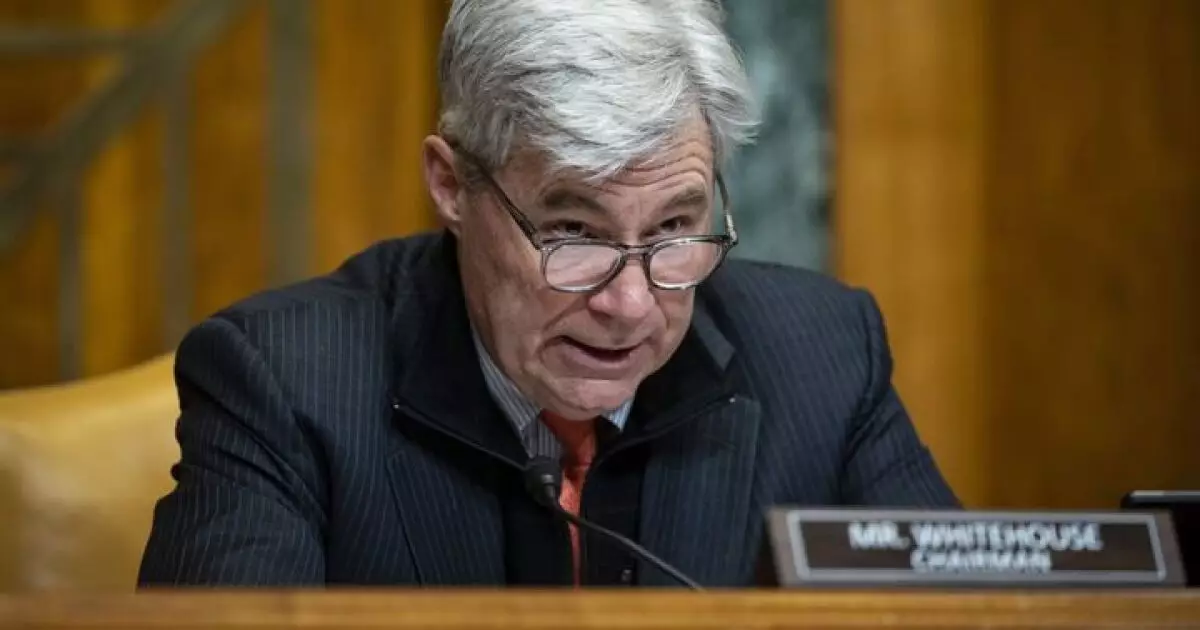The Ripple Effect of Federal Funding Disruptions on Infrastructure Projects

The recent turbulence over federal infrastructure funding, characterized by a perplexing funds freeze by the White House, has sent shockwaves through the transportation sector. Lawmakers and officials, particularly those invested in projects sanctioned by bipartisan agreements, are grappling with uncertainties that could potentially derail critical infrastructure advancements across the nation. This state of affairs has prompted sharp criticism, particularly from lawmakers such as Senator Sheldon Whitehouse, who chastised the executive branch for undermining the legislative process and disappointing expectations that arose from a bipartisan consensus aimed at enhancing infrastructure.
The Aftermath of the Fund Freeze
The federal government’s attempt to freeze the allocation of funds to state and local entities — and the consequent rescinding of this freeze — has not dispelled the underlying chaos. Whitehouse, during an address at an American Association of State Highway and Transportation Officials (AASHTO) conference, stressed that the situation remains in disarray, particularly for states like Rhode Island. Following the freeze, a lawsuit from 22 states sought to right the federal government’s abrupt actions, underscoring a broader distrust and frustration felt among various stakeholders within the transportation sphere. This legal maneuver, alongside clarifications from the Office of Management and Budget, only serves to illustrate the choppy waters of federal compliance that transportation agencies must now navigate.
Adding to the confusion, state transportation departments are facing an impending deadline as funding from the Bipartisan Infrastructure Law is set to conclude in September 2026. With this significant amount of funding on the line, lawmakers are torn between reauthorizing an extensive infrastructure bill that encompasses modern necessities like broadband and aviation, or reverting to a more basic, surface transportation-focused approach. Joung Lee, AASHTO’s director of policy and government relations, reaffirms this sentiment, emphasizing the necessity of prioritizing surface transportation as the foundation of any future legislative initiatives.
At the grassroots level, transportation stakeholders are advocating for a stable infusion of funds through established programs rather than vying for scarce federal discretionary money. As Garrett Eucalitto, AASHTO’s president, elucidates, the intricacies of individual grant agreements often burden agencies with excessive overhead and can delay implementation significantly. This bureaucratic hurdle detracts from the essence of expediency in deploying funds to effectively address transportation needs. Echoing this sentiment, Sen. Shelley Moore Capito suggests discarding ineffective discretionary programs, favoring a strategy that allows state officials to tailor funding to local needs.
The Looming Crisis of the Highway Trust Fund
Concurrently, policymakers are rightfully concerned about the impending insolvency of the Highway Trust Fund, which faces depletion by 2027 without proactive Congressional intervention. A substantial contributor to this crisis has emerged from the increasing prevalence of electric vehicles (EVs), which do not contribute to fuel taxes, traditionally the bedrock of transportation funding. The Biden administration’s efforts to pivot toward greener alternatives, while noble in intent, are also fostering disruption in this critical funding mechanism. Notably, new Department of Transportation Secretary Sean Duffey has taken steps to roll back CAFE standards that are perceived as burdensome. This move, which Duffey frames as a means to preserve consumer choice and cost efficiency, raises eyebrows regarding the overarching strategy for transportation funding amid environmental shifts.
Congress has begun eying alterations to current policies, including the potential rollback of mandates surrounding electric vehicles, maintaining that the push for EVs relies on administrative regulations rather than robust legislative backing. As states reassess their fiscal strategies to compensate for the shortfall created by EVs, many have instituted various fees to ensure fair contributions from all vehicle owners. A patchwork approach currently predominates, with state-level EV fees sprouting in the absence of a cohesive national strategy.
As the saga of federal infrastructure funding continues to unfold, it is evident that the consequences of recent disruptions are far-reaching. Federal agencies must reconcile their obligations to ensure compliance with legislative approvals and address the complexities introduced by evolving transportation dynamics, such as the rise of electric vehicles. Moving forward, it will be crucial for lawmakers and transportation officials alike to foster a dialogue that accommodates both the immediate funding concerns and the long-term vision necessary to sustain effective infrastructure development. Only through collaboration and firm policy direction can the persistent uncertainties be resolved and the nation’s infrastructure be robustly fortified for future challenges.





